





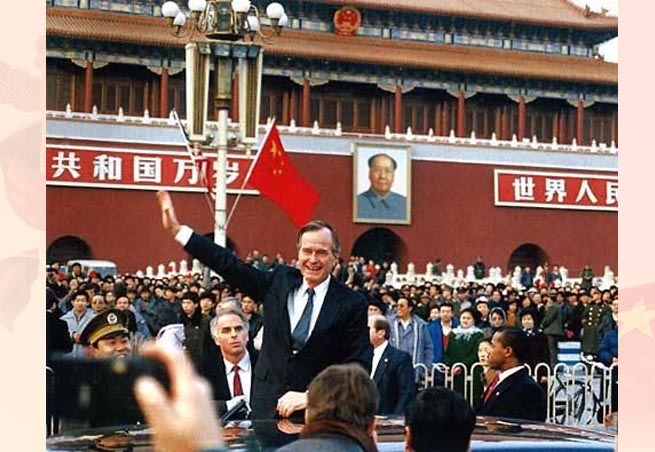 1American President George H. W. Bush, who had taken office only one month previously, began a working visit to China on February 25, 1989.
1American President George H. W. Bush, who had taken office only one month previously, began a working visit to China on February 25, 1989.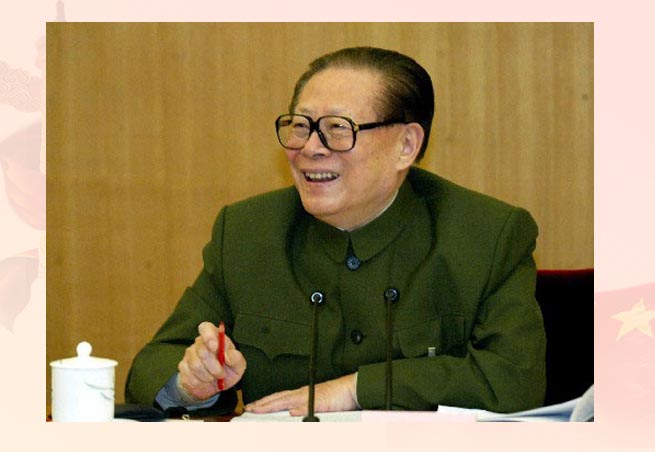 2The Fourth Plenum of the 13th Central Committee of the Communist Party of China (CPC), held from June 23 to 24, 1989, appointed Jiang Zemin General Secretary of the CPC Central Committee.
2The Fourth Plenum of the 13th Central Committee of the Communist Party of China (CPC), held from June 23 to 24, 1989, appointed Jiang Zemin General Secretary of the CPC Central Committee.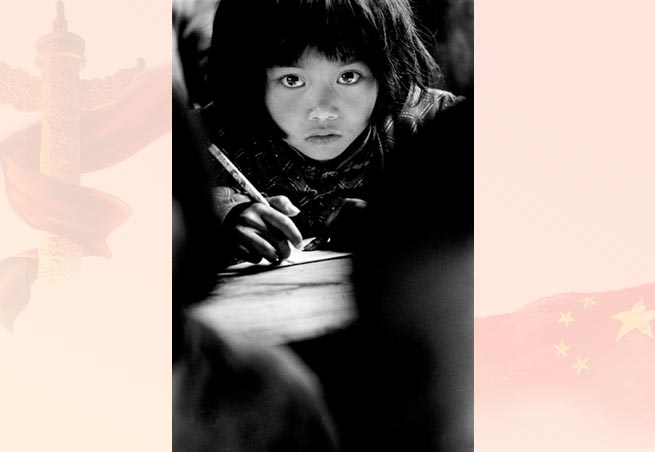 3This famous photo shows a school dropout who returned to classes with the help of the Hope Project. The Hope Project was launched in October 1989 to encourage school dropouts back to the classroom. The project also builds "Hope primary schools", in rural areas. So far the project has built more than 8,000 schools.
3This famous photo shows a school dropout who returned to classes with the help of the Hope Project. The Hope Project was launched in October 1989 to encourage school dropouts back to the classroom. The project also builds "Hope primary schools", in rural areas. So far the project has built more than 8,000 schools. 4The opening ceremony of the 11th Asian Games was held in the Beijing Worker's Stadium on September 22, 1990.
4The opening ceremony of the 11th Asian Games was held in the Beijing Worker's Stadium on September 22, 1990.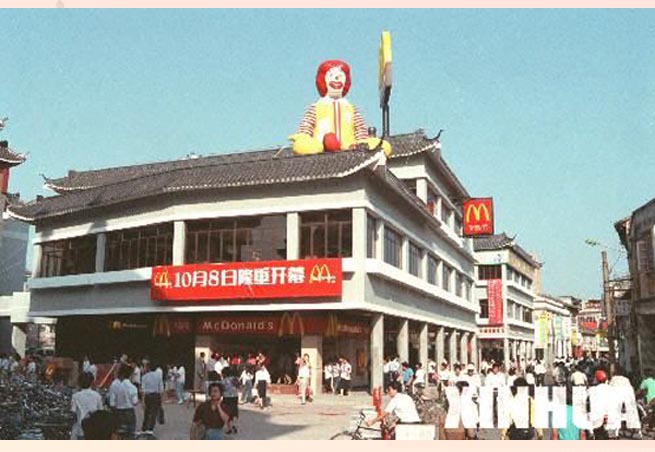 5The Chinese mainland's first branch of McDonald's opened on Jiefang Road in the southern city of Shenzhen on October 8, 1990. The Shenzhen branch is the only mainland McDonald's that accepts both Hong Kong dollars and RMB.
5The Chinese mainland's first branch of McDonald's opened on Jiefang Road in the southern city of Shenzhen on October 8, 1990. The Shenzhen branch is the only mainland McDonald's that accepts both Hong Kong dollars and RMB.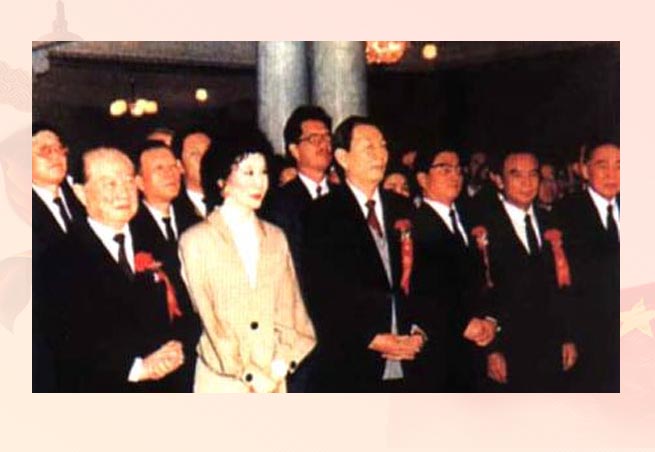 6VIPs attend the opening of the Shanghai Stock Exchange on November 26, 1990. The Shanghai exchange was the first stock exchange to open in the People's Republic of China.
6VIPs attend the opening of the Shanghai Stock Exchange on November 26, 1990. The Shanghai exchange was the first stock exchange to open in the People's Republic of China. 7On December 15, 1991, Qinshan Nuclear Power Plant was connected to the national grid. Construction of the plant started in March 20, 1985. With its opening, China became the seventh country to independently design and build a nuclear power plant.
7On December 15, 1991, Qinshan Nuclear Power Plant was connected to the national grid. Construction of the plant started in March 20, 1985. With its opening, China became the seventh country to independently design and build a nuclear power plant.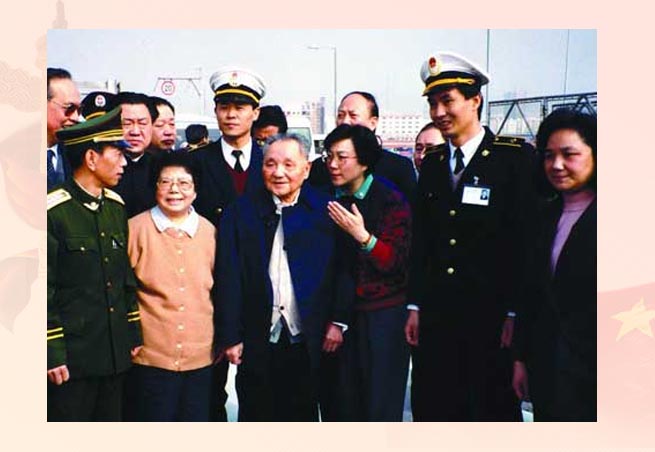 8From January 18 to February 21, 1992, Deng Xiaoping made his famous inspection tour of the south, during which he visited Wuchang, Shenzhen, Zhuhai and Shanghai. During the tour he made a key speech entitled "One Central Task, Two Basic points". One "central task" meant a focus on economic construction. The two "basic points," were reform and opening up, and adherence to the "four cardinal principles" (the socialist road, the people's democratic dictatorship, the leading role of the Party, and Marxism-Leninism-Mao Zedong thought).
8From January 18 to February 21, 1992, Deng Xiaoping made his famous inspection tour of the south, during which he visited Wuchang, Shenzhen, Zhuhai and Shanghai. During the tour he made a key speech entitled "One Central Task, Two Basic points". One "central task" meant a focus on economic construction. The two "basic points," were reform and opening up, and adherence to the "four cardinal principles" (the socialist road, the people's democratic dictatorship, the leading role of the Party, and Marxism-Leninism-Mao Zedong thought). 9The photo shows a poster advertising the "The Story of Qiu Ju", which won the Gold Deer Award at the first Changchun Film Festival which opened on August 23, 1992.
9The photo shows a poster advertising the "The Story of Qiu Ju", which won the Gold Deer Award at the first Changchun Film Festival which opened on August 23, 1992.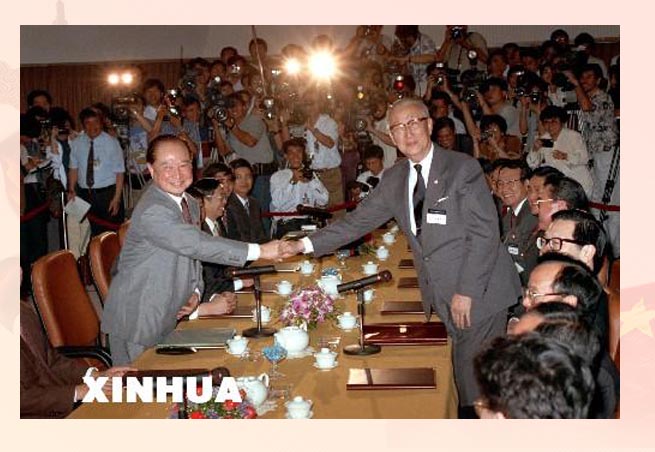 10Wang Daohan (L), president of the Association for Relations Across the Taiwan Straits (ARATS) meets with Koo Chen-fu (R), chairman of the Taiwan-based Straits Exchange Foundation (SEF). The historic meeting took place in Singapore on April 27, 1993.
10Wang Daohan (L), president of the Association for Relations Across the Taiwan Straits (ARATS) meets with Koo Chen-fu (R), chairman of the Taiwan-based Straits Exchange Foundation (SEF). The historic meeting took place in Singapore on April 27, 1993.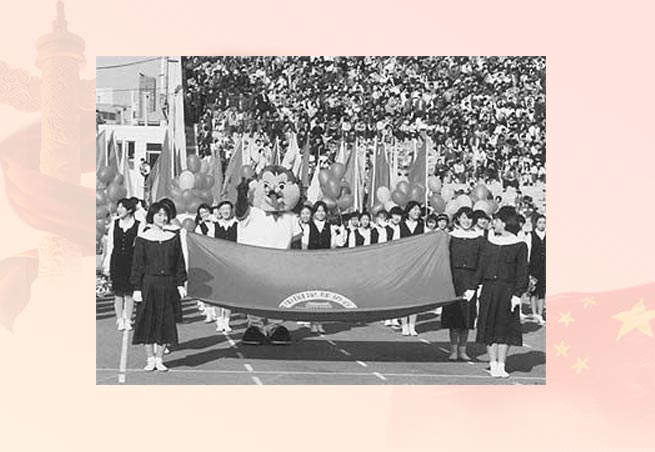 11Chinese Football's A-League kicked off in Chengdu in April 1994. Set in 6 stadiums, the opening matches were an epoch-making event in Chinese sports history.
11Chinese Football's A-League kicked off in Chengdu in April 1994. Set in 6 stadiums, the opening matches were an epoch-making event in Chinese sports history.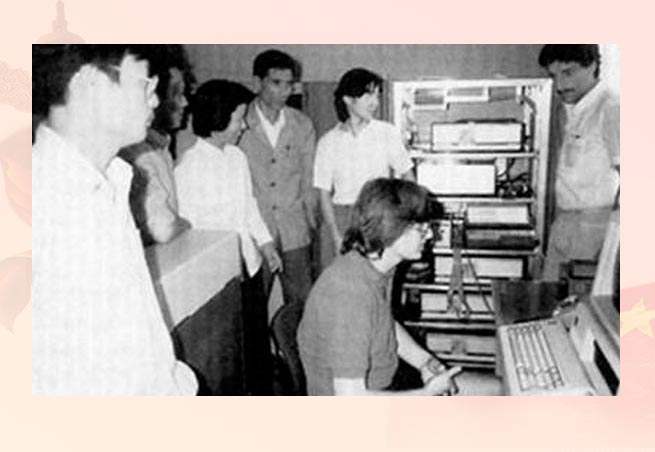 12The first Chinese Internet connection was established on April 20, 1994 at the National Computing Facility Center (NCFC), in Zhongguancun district, Beijing.
12The first Chinese Internet connection was established on April 20, 1994 at the National Computing Facility Center (NCFC), in Zhongguancun district, Beijing. 13"The Labor Law of the People's Republic of China" was passed on July 5, 1994 and came into force on January 1, 1995. It is one of China's basic laws and protects the rights and interests of workers.
13"The Labor Law of the People's Republic of China" was passed on July 5, 1994 and came into force on January 1, 1995. It is one of China's basic laws and protects the rights and interests of workers.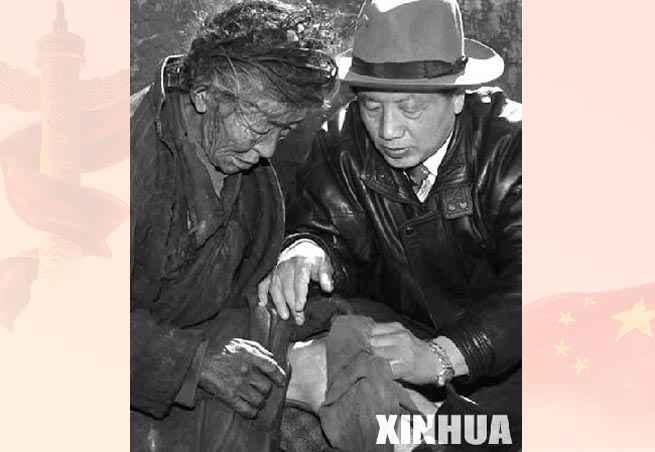 14Comrade Kong Fansen (right) served as secretary of the Ngari Prefecture Party Committee in Tibet until his death in a traffic accident in November 1994. He made major contributions to the development of Tibet and formed close ties with the Tibetan people.
14Comrade Kong Fansen (right) served as secretary of the Ngari Prefecture Party Committee in Tibet until his death in a traffic accident in November 1994. He made major contributions to the development of Tibet and formed close ties with the Tibetan people.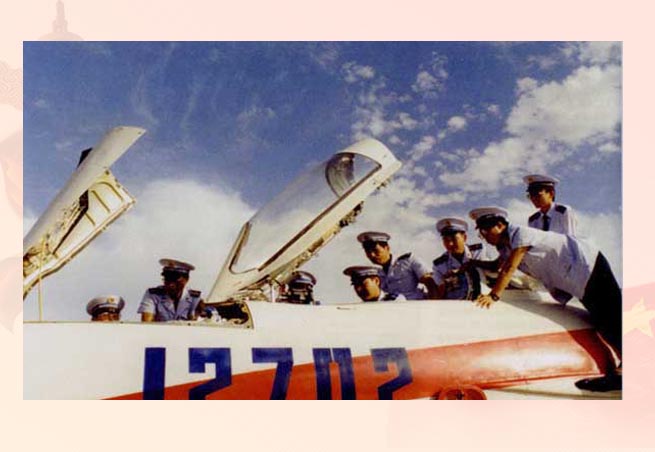 15China's first unmanned supersonic aircraft successfully completed its first flight in April 1995.
15China's first unmanned supersonic aircraft successfully completed its first flight in April 1995.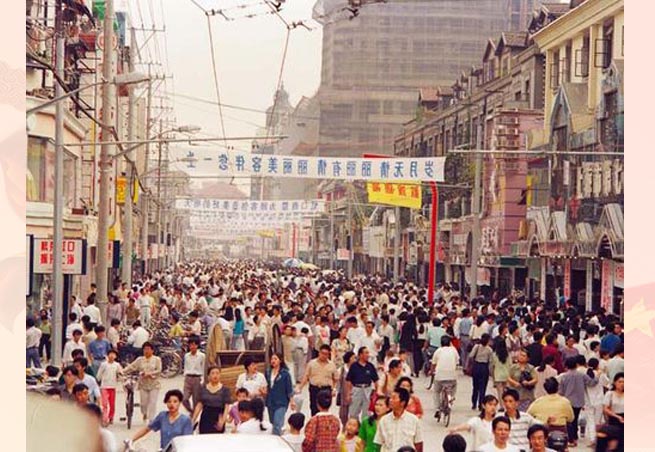 16In 1995, the two-day weekend was implemented for office workers, increasing their annual rest days from 59 to 111.
16In 1995, the two-day weekend was implemented for office workers, increasing their annual rest days from 59 to 111. 17On December 31, 1996, former Minister of Metallurgical Industry Liu Qin announced that China's steel output had exceeded 100 million tons, making the country the world's largest steel producer.
17On December 31, 1996, former Minister of Metallurgical Industry Liu Qin announced that China's steel output had exceeded 100 million tons, making the country the world's largest steel producer.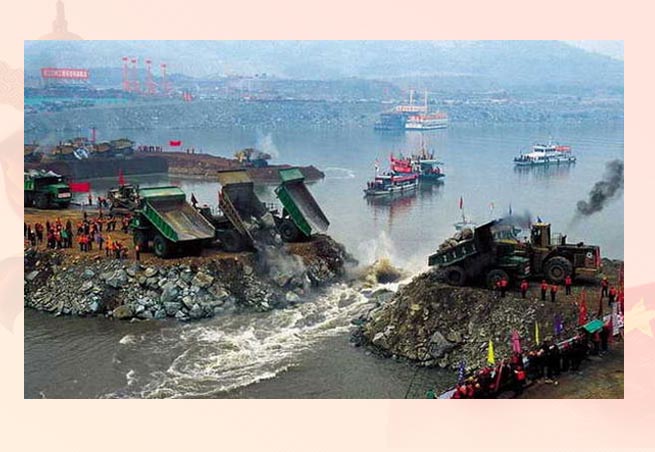 18The Yangtze Three Gorges Dam is the largest hydropower-complex project ever built in the world. Construction began on December 14, 1994, and river closure was completed on November 8, 1997, marking the successful conclusion of Phase I of the project.
18The Yangtze Three Gorges Dam is the largest hydropower-complex project ever built in the world. Construction began on December 14, 1994, and river closure was completed on November 8, 1997, marking the successful conclusion of Phase I of the project.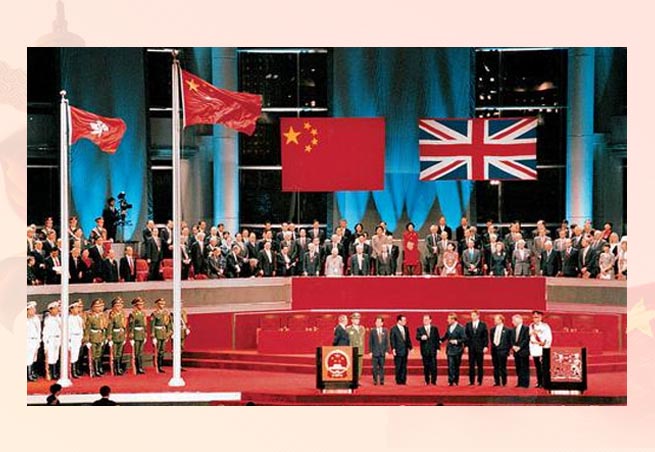 19On July 1, 1997, Hong Kong was handed back to China by the United Kingdom. Hong Kong becomes a Special Administrative Region of the People's Republic of China under the principle of "one country, two systems." The socialist system and related policies are not implemented in Hong Kong.
19On July 1, 1997, Hong Kong was handed back to China by the United Kingdom. Hong Kong becomes a Special Administrative Region of the People's Republic of China under the principle of "one country, two systems." The socialist system and related policies are not implemented in Hong Kong.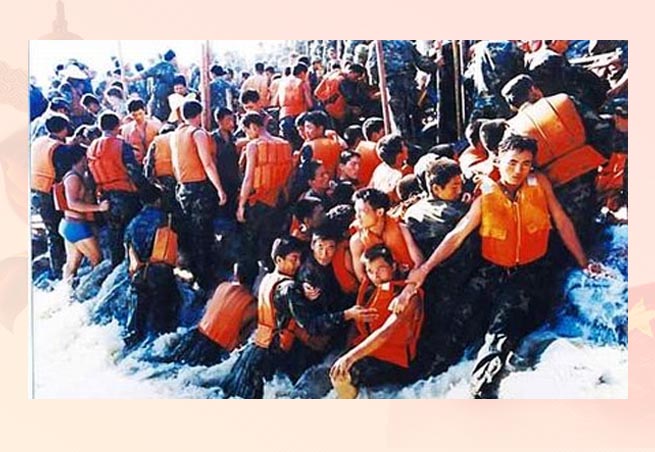 20This photo shows PLA soldiers fighting a catastrophic flood on the Yangtze River in 1998. From June-September, 1998, China suffered massive flooding across the country. 3656 people died, and 14 million people were left homeless. The floods also flooded 25 million hectares of farmland, and caused damage estimated at over US$20 billion.
20This photo shows PLA soldiers fighting a catastrophic flood on the Yangtze River in 1998. From June-September, 1998, China suffered massive flooding across the country. 3656 people died, and 14 million people were left homeless. The floods also flooded 25 million hectares of farmland, and caused damage estimated at over US$20 billion.
Comments